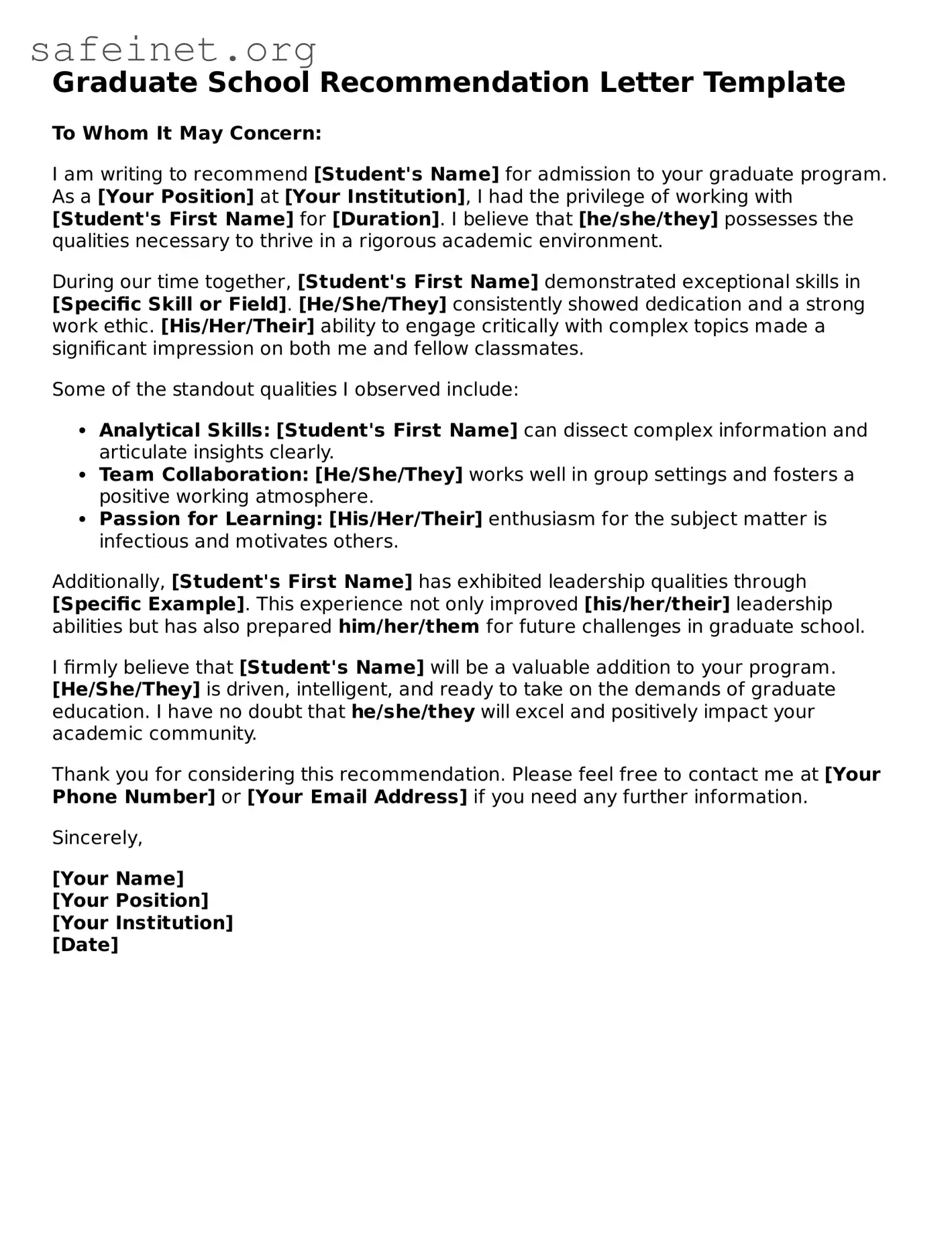A letter of recommendation for employment is similar to a graduate school recommendation letter in that both are used to endorse an individual based on their qualifications and character. Employers typically look for insights into the applicant’s work ethic, skills, and personality traits. Just like in academic settings, the letter should provide specific examples that demonstrate the candidate's abilities and potential for success in the workplace.
A professional reference letter also shares characteristics with a graduate school recommendation letter. This document is often requested by potential employers seeking insight into a candidate's work history and professional demeanor. Both letters emphasize personal experiences, delve into the individual’s achievements, and vouch for their competence and overall character.
An academic reference letter for undergraduate programs has many of the same elements as a graduate school recommendation. Both letters focus on the candidate's academic skills, participation in class, and contributions to their field of study. The key difference tends to be the level of rigor expected; graduate programs often require a more in-depth analysis of the candidate's readiness for advanced studies.
A character reference letter is another document that parallels a graduate school recommendation letter. This type of letter is often used in various contexts to speak to a person’s values, ethics, and conduct outside a professional or academic setting. Both types of references aim to convey an individual’s integrity and ability to contribute positively to a community or organization.
A personal reference letter is closely aligned with a graduate school recommendation letter. While the latter is typically written in an academic context, a personal reference can be more versatile. This letter highlights a person’s strengths, skills, and special attributes, presenting them as a strong candidate for various opportunities. It provides a more personal perspective, similar to what is often required in academic settings.
A performance review letter can also resemble a graduate school recommendation letter. These documents both assess an individual's capabilities and progress over a certain period. While performance reviews are structured around job performance, the findings can parallel the assessments made in a recommendation letter, showing how an individual has grown and their potential for future success.
A scholarship recommendation letter shares similarities with a graduate school recommendation letter in purpose and format. Both letters seek to highlight an applicant’s accomplishments, character, and potential for success. They aim to persuade an organization or institution of the candidate's qualifications, emphasizing specific examples of achievements and contributions to convince decision-makers.
A fellowship recommendation letter, similar to a graduate school recommendation letter, supports an applicant’s quest for financial aid or recognition. Both documents convey the candidate's qualifications and aspirations, often citing their academic achievements and potential contributions to their field, providing a robust picture of why they should be chosen for the opportunity at hand.
An internship recommendation letter mirrors a graduate school recommendation by showcasing an individual's qualifications for a specific position or program. In both instances, the recommender discusses the candidate's strengths and experiences. The goal is to convince the recipient of the applicant’s suitability and readiness to take on new challenges.
Lastly, a community service recommendation letter aligns closely with a graduate school recommendation letter in its focus on the candidate's contributions to society. Both letters discuss traits important for personal and professional development, highlighting qualities such as teamwork, leadership, and commitment to service, which are highly valued in both realms.
